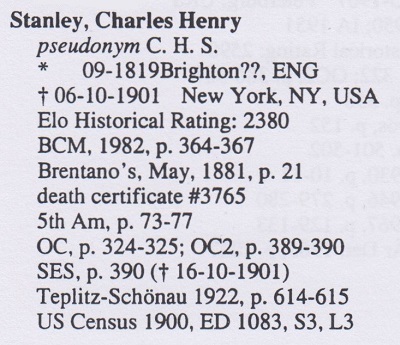
Edward Winter
Below is the entry for the first US chess champion, C.H. Stanley, in the privately distributed 1994 edition of Chess Personalia by Jeremy Gaige:

Since 1994, chess historians have illuminated much more of Stanley’s life and career, although some areas are still recondite, a prime example being his place of birth.
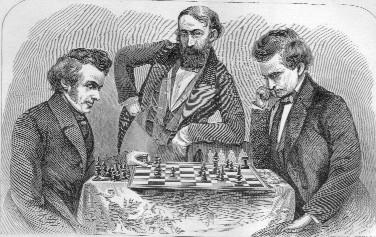
This picture was published in Brevity and Brilliancy in Chess by M.J. Hazeltine (New York, 1866). From the author’s Introduction (pages x-xi):
‘The engraving forming our frontispiece has a genuine historical interest in the records of American chess. It illustrates the first really well-appointed passage at arms in Caissa’s lists, by an American challenger against a champion of name from the old world. And the likenesses, thanks to the painstaking skill of an accomplished artist, are admirably preserved, pleasing reminders of so memorable an epoch. J.H. Turner, Esq. against Charles H. Stanley, Esq., with the renowned Herr J. Löwenthal honoring the contest with his presence. The match was fought at Washington some 20 years since, Mr Stanley winning, but not without receiving some sturdy dints in return. In the particular position given, Mr Stanley is just lifting a rook to execute the initial coup of an announced mate in three moves. As may be supposed, he wears his “very happiest expression”.’
Rod Edwards (Victoria, BC, Canada) writes:
‘Hazeltine’s book says that the Stanley v Turner match in Washington took place “some 20 years since”, whereas it was played in 1850. (Stanley’s famous match with Rousseau was in 1845.)
D.W. Fiske’s book on New York, 1857 has, on pages 389-396, a section by J. Löwenthal about his visit to America which clearly suggests that he was not present at the Stanley v Turner match. He describes his first introduction to Stanley in New York, not long after his arrival in the States, and says that they played chess that evening at Stanley’s house. He then adds (on page 391):
“It was about this time that Mr Stanley left for Washington, to play his match with Mr Turner; and when he returned victorious, he introduced me to the leading members of the New York Chess Circle ...”
Did the engraver of Hazeltine’s frontispiece use artistic license in putting Löwenthal in the picture? Or were any of the persons depicted, or even the event itself, misidentified by Hazeltine?’
(4955)
Our picture above (shown in C.N.s 3503 and 4955) has been appropriated by a number of websites, the give-away being not just the identical scan but even the identical wording for the source: ‘Brevity and Brilliancy in Chess by M.J. Hazeltine (New York, 1866)’. The Internet is awash with sites pretending that the work of others is their own.
We are grateful to the Cleveland Public Library for permission to reproduce its scan from Hazeltine’s book:
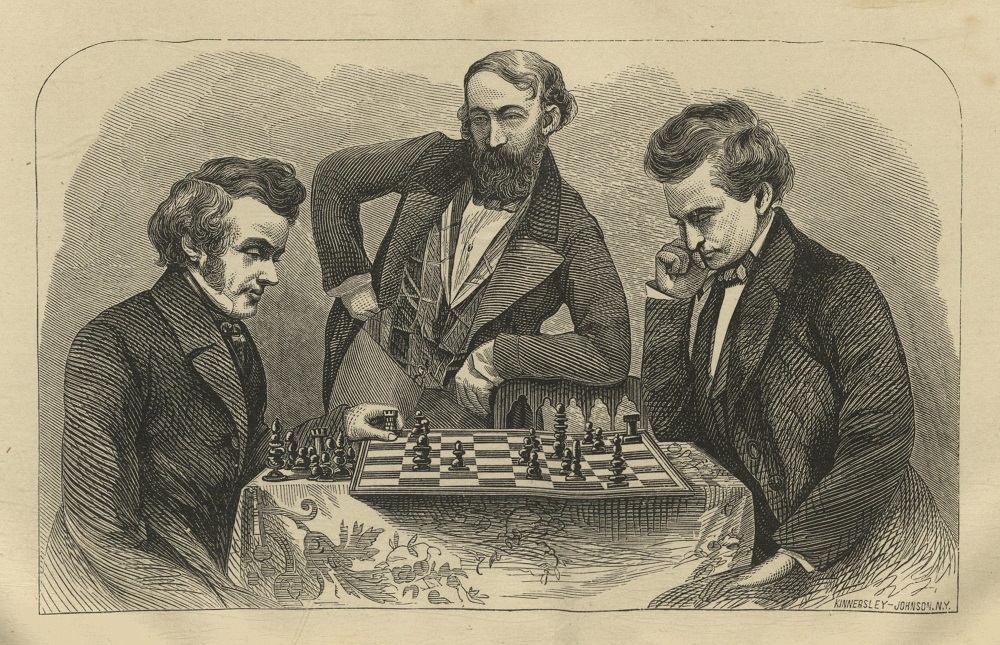
From page 42 of Thomas Frère and the Brotherhood of Chess by Martin Frère Hillyer (Jefferson, 2007):
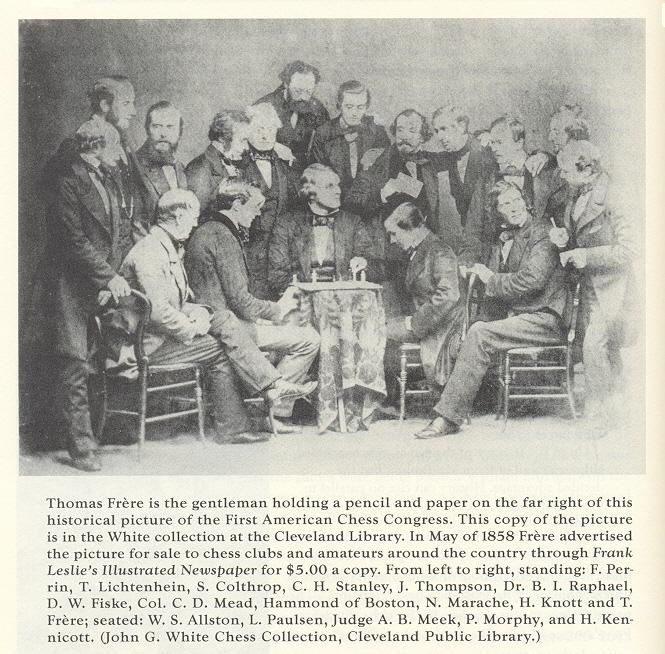
(4780)
Pictures of New York, 1857 were also discussed in C.N.s 1879, 3828, 7393 (see below) and 7394. A detail of Stanley from the image shown in C.N. 3828:
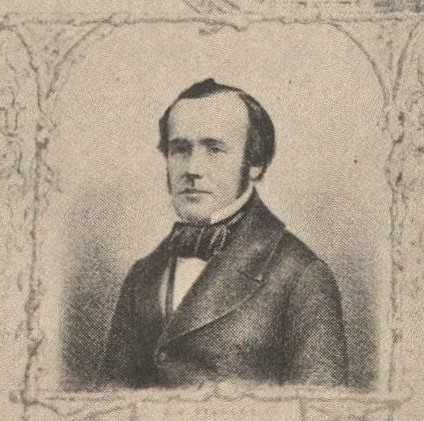
Staunton was well known for making ‘rude’ replies to correspondents in his Illustrated London News column, but some other editors of the time wrote similarly. Here is C.H. Stanley answering ‘Draw Game’ of Philadelphia in Harper’s Weekly, 30 October 1858, page 702:
‘You must really obtain some elementary work, and exhibit it in small doses, or ask some old lady in your neighborhood. Anyone, we should think, could answer your queries who had ever attempted to play a single game.’
(4276)
Pete Tamburro (Morristown, NJ, USA) asks why, in his Spirit of the Times chess column, Charles H. Stanley used the title Chess Player’s Magazine when referring to the periodical that he edited (1846-47), whereas it is commonly known as the American Chess Magazine.
Both titles were used. ‘The American Chess Magazine’ appeared on the cover, as shown, for instance, on page 82 of David DeLucia’s Chess Library. A Few Old Friends (Darien, 2003), whereas ‘The Chess Player’s Magazine’ was the headline on the journal’s pages.
A reprint of the Magazine was produced by the Publishing House Moravian Chess, Olomouc in 1999.
(5298)
Page 79 of David Lawson’s 1976 monograph on Morphy had an illustration captioned ‘Morphy’s American opponents’. They were not identified, and we therefore give the version published on page 54 of the May-June 1950 American Chess Bulletin:
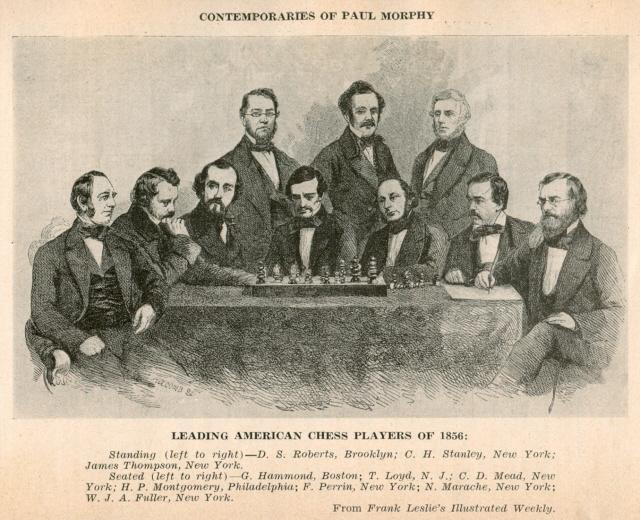
(5959)
From our brittle edition of Frank Leslie’s Illustrated Newspaper, 31 October 1857 (page 344):
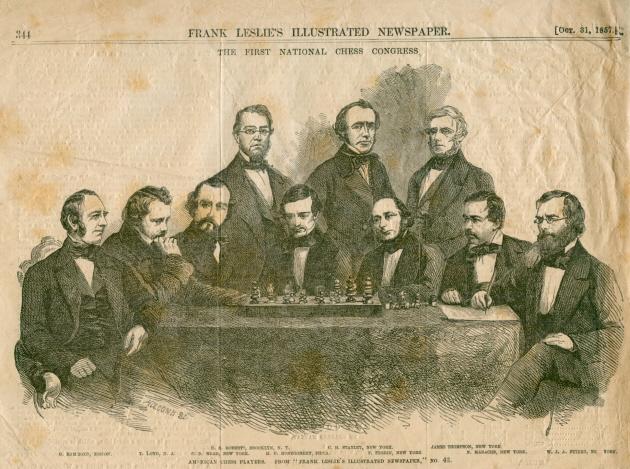
(7393)
Stanley is the one player who looks very different in the two pictures.
Rod Edwards writes:
‘The record of Howard Staunton’s matches given on pages 129-130 of your 1981 book World Chess Champions shows the result of his match with Charles Henry Stanley at the odds of pawn and two moves as +2 –3 =1, and the year is given as 1841. The Oxford Companion to Chess (first edition, page 324; second edition, page 389) concurs on the result and the year. Feenstra Kuiper’s Hundert Jahre Schachzweikämpfe (page 12), Golombek’s Encyclopedia (pages 307 and 456 of the hardback and paperback editions respectively) and Chess Results, 1747-1900 by Di Felice (page 3) all have the same result but give the year as 1839. Fiske’s New York, 1857 tournament book (page 406) states that the match was played not long before Stanley’s departure for the United States (which he says was in 1842), and that Stanley won “by a large majority”.
However, in the 1842 volume of the Chess Player’s Chronicle (page 368) Staunton wrote:
“Messrs St--n and S--y have played in all but 12 games, exclusive of drawn ones, at the odds of ‘the pawn and two moves’. Of these 12, Mr S--y won seven, and Mr St--n five.”
I wonder where the +2 –3 =1 result comes from originally, and how it can be reconciled with Staunton’s claim in the Chess Player’s Chronicle.
World Chess Champions indicates (page 130) that in cases where the final scores were not known the match results given “are those of surviving games”. Presumably, this does not apply to the Staunton-Stanley match, since I count eight game-scores in volume two of the Chess Player’s Chronicle (pages 117-118, 200, 211-212, 213, 226-228, 241-242, 293-294 and 324-325), amounting to +3 –4 =1 for Staunton. I wonder whether all these games were considered part of the formal match.’
The Staunton biography and results tables in World Chess Champions were by R.N. Coles. The only addition that we can offer at present is that an account of Stanley’s life on pages 364-367 of the August 1982 BCM (following research by Jeremy Gaige) stated that Staunton was defeated +2 –3 =1 and that the contest took place in December 1841.
(6563)
What is known about a match between Vezin and Stanley in Philadelphia in 1844? Eduardo Bauzá Mercére (New York, NY, USA) poses the question after finding this cutting (with a misspelling of Vezin’s name) on page 171 of the 16 March 1867 issue of The Field, Turf and Farm:
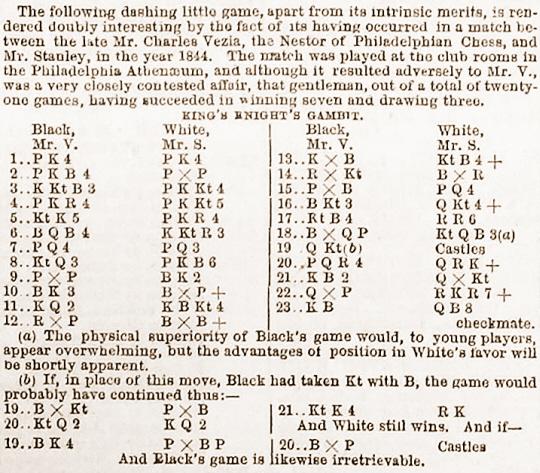
Charles Vezin – Charles Henry Stanley
Philadelphia, 1844
King’s Gambit Accepted
1 e4 e5 2 f4 exf4 3 Nf3 g5 4 h4 g4 5 Ne5 h5 6 Bc4 Nh6 7 d4 d6 8 Nd3 f3 9 gxf3 Be7 10 Be3 Bxh4+ 11 Kd2 Bg5 12 Rxh5 Bxe3+ 13 Kxe3
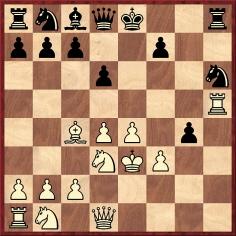
13...Nf5+ 14 Rxf5 Bxf5 15 exf5 d5 16 Bb3 Qg5+ 17 Nf4 Rh3 18 Bxd5 Nc6 19 Qg1 O-O-O 20 a4 Re8+ 21 Kf2 Qxf4 22 Qxg4 Rh2+ 23 Kf1 Qc1 mate.
(6827)
Jerry Spinrad (Nashville, TN, USA ) reports that the Vezin v Stanley game in C.N. 6827 had been published on page 450 of the 16 November 1844 issue of The Spirit of The Times. However, the concluding moves were given as 20 c3 Re8+ 21 Kf2 Qxf4 22 Qxg4 Rh2+ 23 Kf1 Re1+ 24 Kxe1 Qc1 mate. The rook sacrifice is, of course, redundant.
Our correspondent also provides another specimen from the match, presented on page 483 of The Spirit of the Times, 7 December 1844 as ‘one of the best contested games we have seen’:
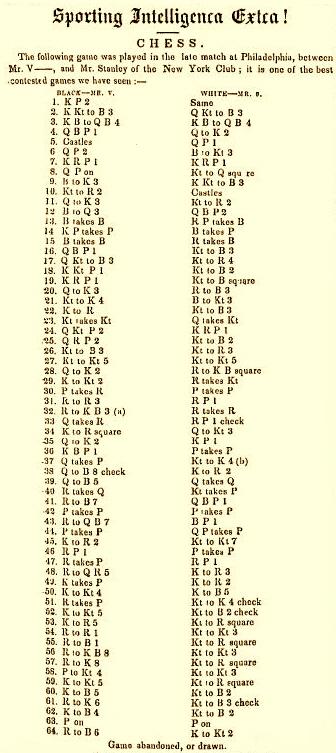
Our attempt to resolve the various notational errors leads to this game-score:
Charles Vezin – Charles Henry Stanley
Philadelphia, 1844
Giuoco Piano
1 e4 e5 2 Nf3 Nc6 3 Bc4 Bc5 4 c3 Qe7 5 O-O d6 6 d4 Bb6 7 h3 h6 8 d5 Nd8 9 Be3 Nf6 10 Nh2 O-O 11 Qe2 Nh7 12 Bd3 f5 13 Bxb6 axb6 14 exf5 Bxf5 15 Bxf5 Rxf5 16 c4 Nf6 17 Nc3 Nh5 18 g3 Nf7 19 h4 Nh8 20 Qe3 Rf6 21 Ne4 Rg6 22 Kh1 Nf6 23 Nxf6+ Qxf6 24 b4 h5 25 a4 Nf7 26 Nf3 Nh6 27 Ng5 Ng4 28 Qe2 Rf8 29 Kg2
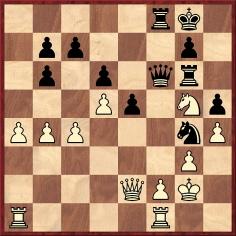
29...Rxg5 30 hxg5 Qxg5 31 Ra3 h4 32 Rf3 Rxf3 33 Qxf3 h3+ 34 Kh1 Qg6 35 Qe2 e4 36 f3 exf3 37 Qxf3 Ne5 38 Qf8+ Kh7 39 Qf5 Qxf5 40 Rxf5 Nxc4 41 Rf7 c6 42 dxc6 bxc6 43 Rc7 c5 44 bxc5 dxc5 45 Kh2 Nb2 46 a5 bxa5 47 Rxc5 a4 48 Ra5 Kh6 49 Kxh3 Kh7 50 Kg4
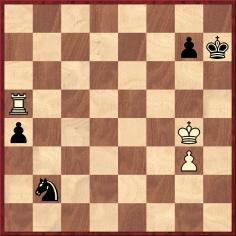
50...Nc4 51 Rxa4 Ne5+ 52 Kg5 Nf7+ 53 Kh5 Nh8 54 Ra1 Ng6 55 Rf1 Nh8 56 Rf8 Ng6 57 Re8 Nh8 58 g4 Ng6 59 Kg5 Nh8 60 Kf5 Nf7 61 Re6 Nh6+ 62 Kf4 Nf7 63 g5 g6 64 Rf6 Kg7 Drawn.
(6864)
An article by John S. Hilbert entitled ‘The Great American Chess Magazine War: Or Which Came First, Stanley’s or the Sphinx?’ was published on pages 70-78 of issue three of the American Chess Magazine (Summer 2017).
Jerry Spinrad points out that a news item about the disappearance of Charles A. Libby on page 3 of the Savannah Morning News, 14 July 1885 referred to his acquaintance with C.H. Stanley, ‘a phenomenally clever chess and whist player’:

(11291)
From John Townsend (Wokingham, England):
‘In the 1840s, Charles Stanley, of the Brighton Chess Club, had problems published in the Illustrated London News, and problems and a game in the Chess Player’s Chronicle. (Details can be found in my book, Historical notes on some chess players, pages 93-94). Some writers have equated him with Charles Henry Stanley, but that is clearly wrong, since references which associate the problemist Charles Stanley with the Brighton Chess Club are after Charles Henry Stanley had emigrated to the United States in 1845.
Who, then, was the problemist? There is strong evidence that he was a close friend of Hugh Alexander Kennedy, a leading light at the Brighton Chess Club. When Kennedy was married on 14 November 1849 to Mary Georgiana Ward, at St John’s, Hampstead, one of the two witnesses who signed the marriage register was “C.T. Stanley”. I have found only one “C.T. Stanley” who this could reasonably be and that is “C.T. Stanley, Esq., Lindfield” who for a number of years appeared in the list of members printed in Sussex Archaeological Collections, for example, Sussex Archaeological Collections, Vol. II, 1849, page xvi, where, incidentally, “Captain Hugh Kennedy, Brighton” appears on the same page.
Lindfield is a Sussex village which lies about 15 miles to the north of Brighton, so it would have given Stanley reasonable access to the chess club. Peter Edmund Stanley, on page 374 of his book The House of Stanley (1998), notes, as part of his chapter on “The Stanleys of Preston”, that Charles Thomas Stanley (1806-83) lived “for a number of years” at Lindfield, and that is undoubtedly who “C.T. Stanley” was.
Charles Thomas Stanley was the youngest son of James Stanley, the vicar of Ormskirk, Lancashire, and his baptism is recorded in the Ormskirk register on 18 September 1812, noting his date of birth, six years earlier, as 28 September 1806.
He was a cousin of the Earl of Derby and used the same arms, crest and motto. His first wife was Elizabeth Rosamond, the eldest daughter of James Ward, of Surrey.
By 1881 he had moved to Charlton, near Dover, Kent, where he is to be found on the census (National Archives, RG11 1000/117). This shows that he was then receiving income from railway debentures and interest on mortgages; he was with his second wife, Catherine S. Stanley, who had been born at Steyning, Sussex, and three children, Edmund (18), Ernest (13) and Rosa (16), all born at Brompton, Middlesex. This indicates that he had lived at Brompton after Lindfield and before Dover. He had no children by his first wife.
He died at 7 Beaumont Terrace, Dover, on 23 September 1883. A death notice in the Evening Mail of 1 October 1883 (page 8) stated that he was a brother of the late Admiral Edward Stanley. The National Probate Calendar records that probate was granted to his relict, Catherine Stepney Stanley, on 30 October 1883, his personal estate amounting to £2,658 12s. 11d.’
(11945)
It may be stressed that the player discussed in C.N. 11945 is Charles Thomas Stanley. Charles Henry Stanley was chronicled by Mr Townsend on pages 91-107 of his book Historical Notes on Some Chess Players (Wokingham, 2014).
Further to the mention of Brevity and Brilliancy in Chess by M.J. Hazeltine (New York, 1866), the Cleveland Public Library has provided the following from one of its copies of the book:

(12044)
Michael McDowell (Westcliff-on-sea, England) draws attention to his article on pages 418-419 of The Problemist, July 2008, in which he referred to the statement in American Chess-Nuts by E.B. Cook, W.R. Henry and C.A. Gilberg (New York, 1868) that a composition by C.H. Stanley (a self-mate in four) was the first chess problem printed in America (see also page v). It appeared in the first chess column, in Spirit of the Times dated 1 March 1845.
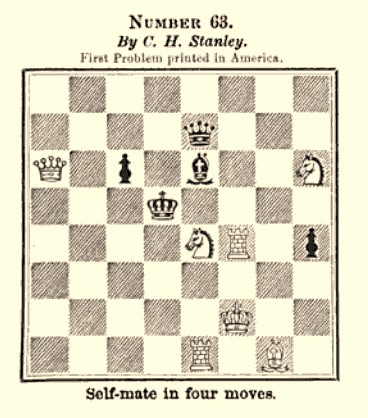
From American Chess-Nuts, page 365
(12058)
To the Archives for other feature articles.
Copyright Edward Winter. All rights reserved.